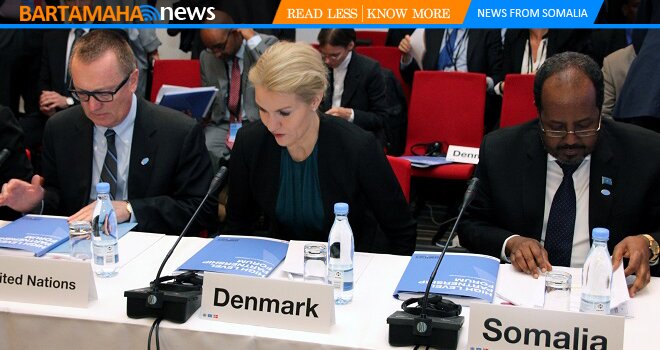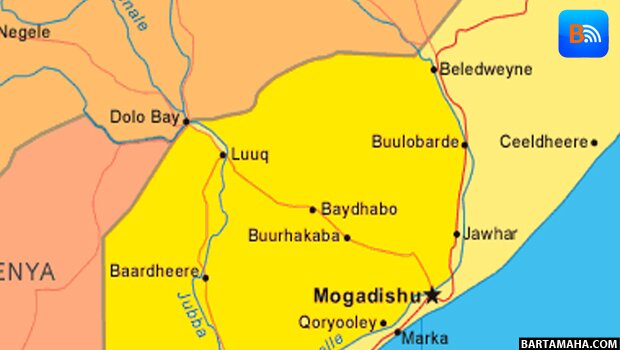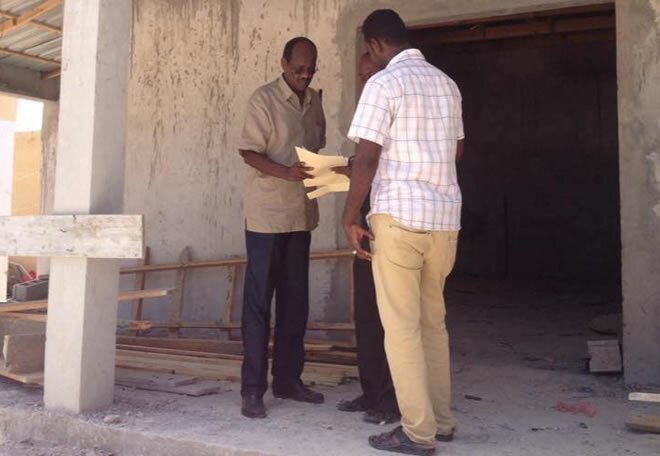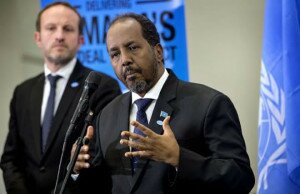Somali traffic cops battle gridlock and chaos
Mogadishu, Somalia - “Tow it away, tow it away!” shouts a short man at a group of men wearing white shirts and navy blue trousers.
They are the Somali traffic police, and Ali Hirsi Barre – the short man with a larger-than-life personality – is the head of the department. His voice is raspy, but it doesn’t stop him from shouting to be heard over the Mogadishu rush-hour cacophony.
Barre is Somalia’s first traffic commissioner in over two decades. With a stick in his right hand, a mobile phone in his left, and a pistol dangling from his waist, he orders his men to tow away a vehicle parked illegally by the side of Mogadishu’s main thoroughfare. It’s the 10th vehicle they have towed this morning – and it is not even 10am yet.
Three years ago when he was appointed to the $130-per-month job, the city was divided into zones controlled by the government on one side and the armed rebel group al-Shabab on the other. “No one wanted the job or to be a traffic officer. We had no offices or traffic centre,” said Barre, wiping sweat from his brow with a white handkerchief.
With a fragile peace prevailing in the Somali capital, the biggest danger now facing this seaside city is road accidents. “We see at least 12 accidents a day. Most are serious, and we don’t yet operate in all districts of the city,” Barre explained. “About 50 percent of vehicles and drivers don’t deserve to be on the roads.”
Hitching a lift
The challenges he faces are endless. About a quarter of his staff of 200 are pensioners who first started working for the Somali government in 1960, and came out of retirement as a favour to help restore order on the roads.
The entire Somali traffic service owns just two vehicles – one for towing, and one for the commissioner, who has to be guarded 24 hours a day for security reasons. Like everyone who works for Somalia’s weak central government, he is a target for al-Shabab. When making arrests, the officers usually have to hitch a ride with the driver they are arresting.
Standing next to a newly-installed solar traffic signal is Adan Gurajo Ibrahim, a father of six who first joined the service in 1963, and came out of retirement to head the newly re-established emergency response team. “The main problem on the roads is youngsters who drive so fast they want to fly the vehicles off the roads,” he said, while standing in the middle of the road to force vehicles to stop for the red light.
Somalia has one of the youngest populations in the world – more than 60 percent of Somalis are under the age of 25 – and most accidents in Mogadishu involve them.
With the lights still red, vehicles scurry to the side of the road and Ibrahim instantly jumps to the sidewalk. A tinted four-wheel drive with no number plates speeds past, closely followed by a pickup truck full of armed men in uniform. “That’s another problem. A big problem – and attempting to stop them can get you run over or shot,” said Ibrahim, pointing a stick at the three-vehicle convoy. “It could be a minister, a UN or NGO staff in that vehicle. They never respect the rule. They say they don’t want to have number plates or stop because they will be targeted.”
In a much-hailed road safety project, solar-powered traffic lights were installed on Mogadishu’s Maka al-Mukarama road. But instead of helping, the traffic lights have caused even more trouble.
Of four sets, only two are currently working. Of the other two, one shows red, amber and green lights at the same time – confusing drivers who are themselves getting used to the signals for the first time. Another one has stopped working completely.
No licences
To make matters worse, many car dealers do not check whether buyers have a driver’s licence.
Abdullahi Omar is the manager of the Hilal car dealership, and sells around 15 vehicles a month. Buyers pay in cash and no identity or licence checks are required. “I pay $2,400 in tax for that car [a four-wheel vehicle] to the government, and they want me to go around asking whether buyers have driving licence? Then they will not have a job to do. Why should I do their job for them? Maybe they should bring back the potholes, to reduce accidents.”
The Turkish government recently sponsored a multi-million-dollar project to reconstruct some of the city’s main streets, but – like the installation of traffic lights – the project has brought its own problems. “Before there were big potholes on the roads that forced reckless drivers to slow down. But with the new roads, they treat the road like a racing track,” said Mohamed Noor, a minibus driver sitting at one of the two working traffic lights on Maka al-Mukarama road. None of the newly constructed roads have speed bumps.
Last year, in a bid to reduce further chaos on the roads, Somalia’s traffic service began issuing licences to eligible drivers for the first time in more than two decades – and made possessing a driver’s licence compulsory.
But the traffic service, stretched to capacity, is only able to issue about 20 new licences a day in Mogadishu – a city of more than a million people.
Back to school
Sensing a gap in the market, five driving schools have been licensed to operate in Mogadishu in the past year. Osman Hassan Elmi, 38, moved back from Dubai last year to start a driving and traffic school in Mogadishu. “We started with 10 cars but because of high demand and long waiting lists, we added eight more,” he said. In the nine months since the school opened, more than 500 students have graduated.
But the school’s curriculum has its limitations. “Mogadishu has no traffic signs. What you teach in theory you can’t show the students when you take them out onto the streets,” Elmi said. “They have to imagine and wait for the day when traffic signs appear on the roads.”
Despite the challenges that Barre and his staff face on Mogadishu’s roads, he is more optimistic than ever.
“Three years ago, this road was a no-go. Now there are traffic jams. Eight months ago there were no traffic lights, now there are four. We are only going one way,” said Barre, “and that is forward”.
Source: Al Jazeera
Comments
comments
 Calendar
Calendar





































